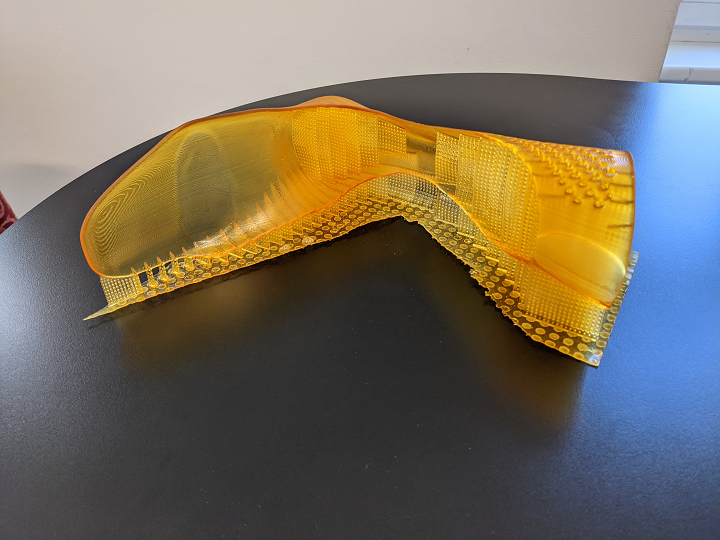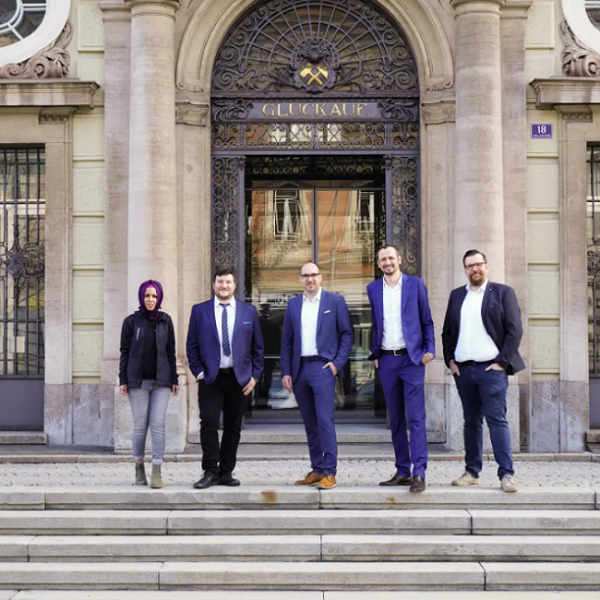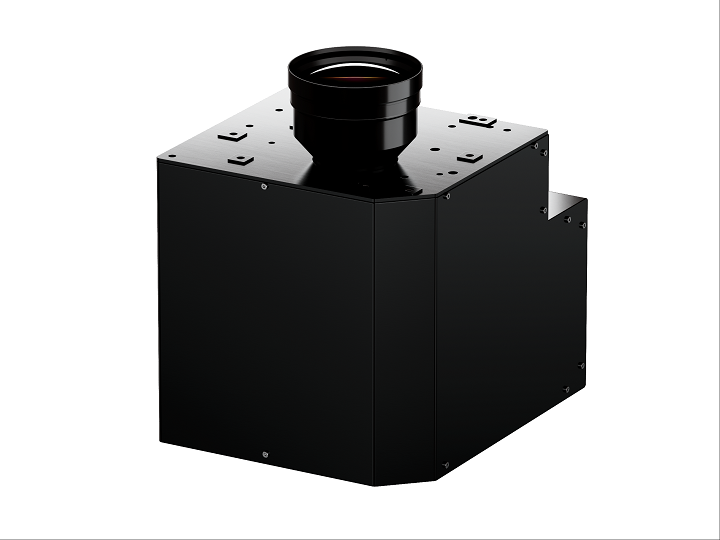Custom medical devices called orthotics are used to hep patients recover from injuries and correct body misalignments, and can also relieve pain. Unfortunately, it takes a long time to make them, and once they are completed, they’re not the most comfortable things to wear. Austrian startup Luxinergy, founded in 2019, has developed a super-fast 3D printing process, and a new material, to help address the issues of comfort and speed in orthotics manufacturing. The process is a digital light processing (DLP) one, in which two UV projectors display an image of the design across each layer of plastic resin, and is powered by the HELIOS light engine, created by precision optical systems manufacturer In-Vision Digital Imaging Optics GmbH.
Thomas Griesser, a chemist and professor at Montanuniversitat Leoben in Austria, and Thomas Rockenbauer, mechanical engineer and researcher, co-founded Luxinergy. Griesser developed a strong, yet biocompatible and ductile resin, and Rockenbauer built a fast DLP 3D printer using In-Vision’s UV projectors; together, they hope to bring orthotic stabilizers for arms, hands, and legs to the market in 2022.
“Whether they are used for insoles for shoes, splints for stabilization, or prostheses, the latest 3D printing technologies are taking medical device manufacturing to a new level. We believe fast 3D printing is the future of orthotics,” Griesser stated.
Traditionally, orthotics are created by building a “negative” plaster mold on the patient’s body. Then, once it’s removed, a plaster “positive” is cast, then refined and covered with plastic material in a thermoforming process. Finally, the final plastic orthotic is refined some more, then sanded, and finally fitted to the patient. While this process can take weeks to complete, 3D printing is able to majorly speed up the orthotics process, and negate the need for uncomfortable casts. But, these 3D printed orthotics can also be brittle, which is why Luxinergy’s biocompatible resin will be a big help. Additionally, DLP technology works faster than something like SLA, which only exposes one part of a design at once, as opposed to two.
A UV Projector light engine is what runs a DLP printer, and Luxinergy was impressed with In-Vision’s high level of product quality and, according to a blog post, “innovative spirit in previous collaborations.” That’s why the startup wanted to partner with In-Vision and use the ultra-fast HELIOS light engine to power its own system.
Rockenbauer explained, “We started collaborating with In-Vision on our scientific projects when we were at the university, and we now have access to their latest technology, which benefits us enormously.”
HELIOS has a chip with 2K resolution, and each of its millions of tiny mirrors can be individually controlled, which means that Luxinergy can 3D print orthotics with precision at the pixel level. According to In-Vision, its powerful light engine is capable of producing light that’s more than twice as intense as what other products on the market can offer, which means it can cure the liquid photopolymer more quickly for a faster rate of 3D printing.
Griesser said, “Its intensity significantly reduces our printing time.”
Luxinergy’s biocompatible resin allows the company to vary the pliability and thickness in different areas of the orthotic while it’s being fabricated, so that the end product is much more comfortable. The startup also adds perforations to its orthotics so they’re more breathable, and because they’re 3D printed out of clear plastic, it’s much easier for an orthopedist to see if the patient has pressure marks on the skin. Luxinergy’s 3D printer prototype supposedly makes it possible to create orthotics using vat photopolymerization in just hours, as opposed to weeks, and In-Vision says that its HELIOS light engine is easy to maintain and replace, meaning that it can run smoothly with very few interruptions.

Foot orthosis printed with Luxinergy’s new material on their DLP 3D printer. Image courtesy of Luxinergy.
The startup’s 3D printer is currently being tested in Austria, and Luxinergy has some big things coming on the horizon, as its super-fast DLP printing process is attracting some interest from the dental industry as a way to fabricate plastic retainers and braces.
(Source: In-Vision)
Subscribe to Our Email Newsletter
Stay up-to-date on all the latest news from the 3D printing industry and receive information and offers from third party vendors.
You May Also Like
HILOS Launches Studio OS for AI-Driven 3D Printed Shoe Design
At Milan Design Week, footwear 3D printing startup HILOS has unveiled its latest development, Studio OS. Introduced at the historical Villa Bagatti Valsecchi, the platform is meant to redefine how...
3D Printing Webinar and Event Roundup: April 28, 2024
In this week’s 3D Printing Webinar and Event Roundup, the Ceramics Expo is taking place in Michigan, Stratasys continues its advanced training courses, and SPE is holding a Polymer Characterization...
Initial Speakers and Sponsors Announced for Additive Manufacturing Strategies 2025
Nearly a year away from the event, the Additive Manufacturing Strategies (AMS) 2025 conference is already beginning to take shape. Building upon the success of 2024’s summit, AMS has established...
HP & INDO-MIM Collaborate to Boost Metal 3D Printing in India
HP Inc. and INDO-MIM, a US- and India-based supplier of metal injection molding (MIM) powders and contract manufacturer, have announced that the two companies will collaborate to accelerate additive manufacturing...

































